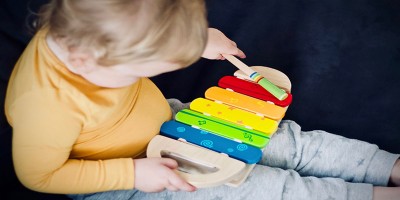Spontaneous play is exactly what it says – play that happens naturally, without any prior planning or being directed by anyone outside the play. In the early childhood context, spontaneous play is usually child-initiated and directed though it can include adults as well. The following article provides information on spontaneous play benefits and how educators can support it.
Spontaneous play happens when children interact with their environment, resources and people around them without the planning or intervention of an adult. Children decide for themselves how and when the play will occur and make decisions about how the play will evolve. They can choose everything – they have the freedom to select their play materials, interest area and even the plot. It is easier to understand spontaneous play as opposed to intentional or structured play when an educator uses the play experiences or directs it in a particular way to achieve children’s meeting of a specific learning outcome.
Following are the major characteristics of spontaneous play:
- It is open-ended – there are no ideal outcomes in spontaneous play for example, in the sand tray, a child can choose whatever shape to build a castle and not just rectangular towers – they can be in the form of a circle, mound with slopes, random holes or any other way they want.
- Children explore freely during spontaneous play – they can change tools, characters, locations and even purpose should wish to; there are no rules to follow in spontaneous play.
- Unlike the structured play, there are no goals, objectives or an ending point in spontaneous play – children can pause, stop and restart whenever they wish to.
- Children may communicate freely during spontaneous play whereas in structured play, it is more common for adults might facilitate or mediate children’s communication with their peers.
Benefits Of Spontaneous Play
- It is creative - Since there are no preset rules and virtually no adult guidance - only to prevent playground accidents, perhaps – unstructured play is highly creative. When playing on their own, children are free to make their own rules, adopt multiple roles, imagine fantastic locations and then go and change all of this mid-way. Such pretend play encourages children to adopt different points of view and look at an issue from all angles. Again spontaneous play allows children to use whatever materials and tools they have at hand to build structures or even mix up materials for construction – for example instead of using crayons to draw, they may just choose to stack up them on each other, thereby learning about rolling or sliding actions.
- It builds social skills - Unlike guided play, free play allows children to make interpersonal choices and then see if they are working. Through a process of trial and modification, they learn to take turns, collaborate and negotiate besides building relationships and support systems on their own.
- It is varied – When play is left to children, it is sure to include more variation and imagination as children will hardly willingly do things to get bored. For example, spontaneous play on the playground will probably include movement of all kinds – not just running, climbing, jumping, skipping and sliding but also turning, swinging, spinning and even just going round in circles. Children’s limbs and muscles benefit from all these actions just as their fine motor skills get enough practice with actions like gathering pinecones or tracing patterns in the sand. While physical movement can be ensured from guided games as well, the unstructured play makes it all enjoyable – increasing the chances of children doing it more often.
- It is adventurous – Spontaneous play, especially in the outdoors, encourages children to interact with their natural environment. They play with different like elements leaves, mulch, sand, mud and water or negotiate physical space by climbing, jumping, sliding and swirling. All this helps children to test their physical and emotional limits as well – how far they can go without feeling afraid or getting hurt. In contrast, structured activities alert children to rules and guidelines even before play begins and might act to rein in their sense of adventure even if on a purely subconscious level.
- It supports critical thinking – Among the commonly cited drawbacks of free play is that they are unlikely to lead to learning unless guided by educators. But even when children are engaged in spontaneous play, they are engaging with problem-solving processes. For example, a group of older kids building a fort will talk about how to make their ideas happen with furniture and blankets. They might notice the blankets falling and come up with suggestions to keep them from falling. Some children will propose using clothespins, while others will try using tape. Essentially all this is part of brainstorming, hypothesis testing, evaluating and correcting the cycle that makes up the problem-solving process. Once they learn which works and doesn’t, children will be better able to recall that information later in life and use that memory as a framework for future problems than if they had been guided through the activity by adult instructions.
Supporting Spontaneous Play
Organize the environment
Even spontaneous play can make for enriching learning experiences, provided children are allowed access to varied materials, textures, colours, paints and loose parts. Keep such objects nearby, neatly labelled and on shelves so children can reach themselves. Set up different interest areas in the room like reading nooks, music corner, role-play area, construction table, discovery area and so on. Arrange furniture in ways that enable children to move freely, from one interest area to another. Include lots of unstructured material and lose parts to facilitate open-ended and imaginative play - avoid telling children what materials or tools to use when playing and how. All this will help children’s play can emerge organically from the varied and stimulating learning environment.
Set up an environment in a way that supports children’s physical and emotional wellbeing. Ensure duplicates of popular items so that spontaneous play is not hampered by long waiting times or frustration over-sharing. Check all items are in good repair and discard broken equipment. For both indoor and outdoor areas, ensure children can have separate play spaces to play individually or in small groups, and engage in quiet or loud play activities. an area dedicated to Den-Making, allows children to shape their own environment within the play environment, and engage in all kinds of role-play activities and social interaction.
The other important aspect of organising the environment is to allow children enough time and space to play spontaneously. If they are hurried or physically constrained, children will be unable to extend their play freely and thereby lose the learning opportunities in such play. Indeed, they need time to repeat, practice and reinforce what they have discovered or learned through playing,
Engage with children
Spontaneous play for children need not mean that educators stop at organising the environment. Indeed, children will best learn from play when educators are around to encourage and support them. Closely observe what the child is doing and when they look at you, use positive facial expressions to show you are noticing their efforts. Ask open-ended questions about the child’s choice of activity or materials. If you think they are stuck at a problem, help them with clues rather than pointing out the solution. For example, if a child is unable to get paint to stick on a bottle, support them by asking “What do you want to do? How can we solve this problem?” or making suggestions, like, “Hmm…I wonder what happens when we mix some glue with the paint”. Educators just need to give some hints so that children can think for themselves and explore solutions on their own.
Carefully observing children in spontaneous play will also help educators identify those who are struggling with the experience, need additional support or are at risk of being excluded.
Yet another way an educator can engage with children’s spontaneous play is by joining in for example, by adopting the role of a customer in a shop, or a passenger on a bus during children’s role-play. However the invite should come from the children and after having joined, the educator should continue to let children lead and direct the play experience so that it remains truly unstructured.
Finally, educators can use insights gleaned from their observations or their own inclusion in the play to extend children’s learning into curriculum areas. A new awareness of children’s interests, learning and communication styles will also support educators in designing more intentional activities to make learning truly relevant and meaningful for the children.
Further Reading
Stages Of Play - There are 6 different types of play that children participate in over the course of their development. The following provides information on each stage.
The Value of Play-Based Learning In Early Childhood Services - The following provides ways to understand the value of play-based learning and implementing play-based learning into the learning environment.
Using Open-Ended Questions with Children - The following provides information on the benefits of open-ended questions, how to ask open-ended questions, tips and strategies and more.
References:
- Spontaneous Play, Nurtured At Home NZ
- What Is Free Play, Unicef
- Encouraging Free Play, Pentagon Play UK







 As an Educator in Australia, your pay rate falls under the Children’s Services Award 2010. This award states the minimum amount that an employer can
As an Educator in Australia, your pay rate falls under the Children’s Services Award 2010. This award states the minimum amount that an employer can When working as a qualified Early Childhood Teacher (with a university degree) within a service, your rate of pay will come from the Educational Services
When working as a qualified Early Childhood Teacher (with a university degree) within a service, your rate of pay will come from the Educational Services When working as a Diploma Qualified Educator your pay rate is from the Children's Services Award 2010. This Award states your minimum rate of pay
When working as a Diploma Qualified Educator your pay rate is from the Children's Services Award 2010. This Award states your minimum rate of pay When working as a Cert 3 Qualified Educator, your pay rate is from the Children's Services Award 2010. This Award states your minimum rate of
When working as a Cert 3 Qualified Educator, your pay rate is from the Children's Services Award 2010. This Award states your minimum rate of Educational Leaders play a crucial role in their early childhood service by ensuring that the educational program aligns with best practices and supports the holistic
Educational Leaders play a crucial role in their early childhood service by ensuring that the educational program aligns with best practices and supports the holistic In early childhood education and care, ratios are more than a technicality—they are a frontline safeguard. Every child deserves responsive supervision, emotional connection, and developmental
In early childhood education and care, ratios are more than a technicality—they are a frontline safeguard. Every child deserves responsive supervision, emotional connection, and developmental With the new national child safety reforms kicking in on 1 September 2025, early childhood services like yours have a real opportunity to lead the
With the new national child safety reforms kicking in on 1 September 2025, early childhood services like yours have a real opportunity to lead the Here’s a comprehensive Mobile Phone and Smart Watch Policy tailored for early childhood education and care (ECEC) services in Australia, aligned with the latest 2025
Here’s a comprehensive Mobile Phone and Smart Watch Policy tailored for early childhood education and care (ECEC) services in Australia, aligned with the latest 2025 The Sea of Fish Challenge is a national initiative that invites children, educators, families, and communities to create and display fish artworks as a symbol
The Sea of Fish Challenge is a national initiative that invites children, educators, families, and communities to create and display fish artworks as a symbol Across the early childhood education and care sector, educators are sounding the alarm: current staffing ratios are insufficient to deliver safe, meaningful, and developmentally appropriate
Across the early childhood education and care sector, educators are sounding the alarm: current staffing ratios are insufficient to deliver safe, meaningful, and developmentally appropriate


